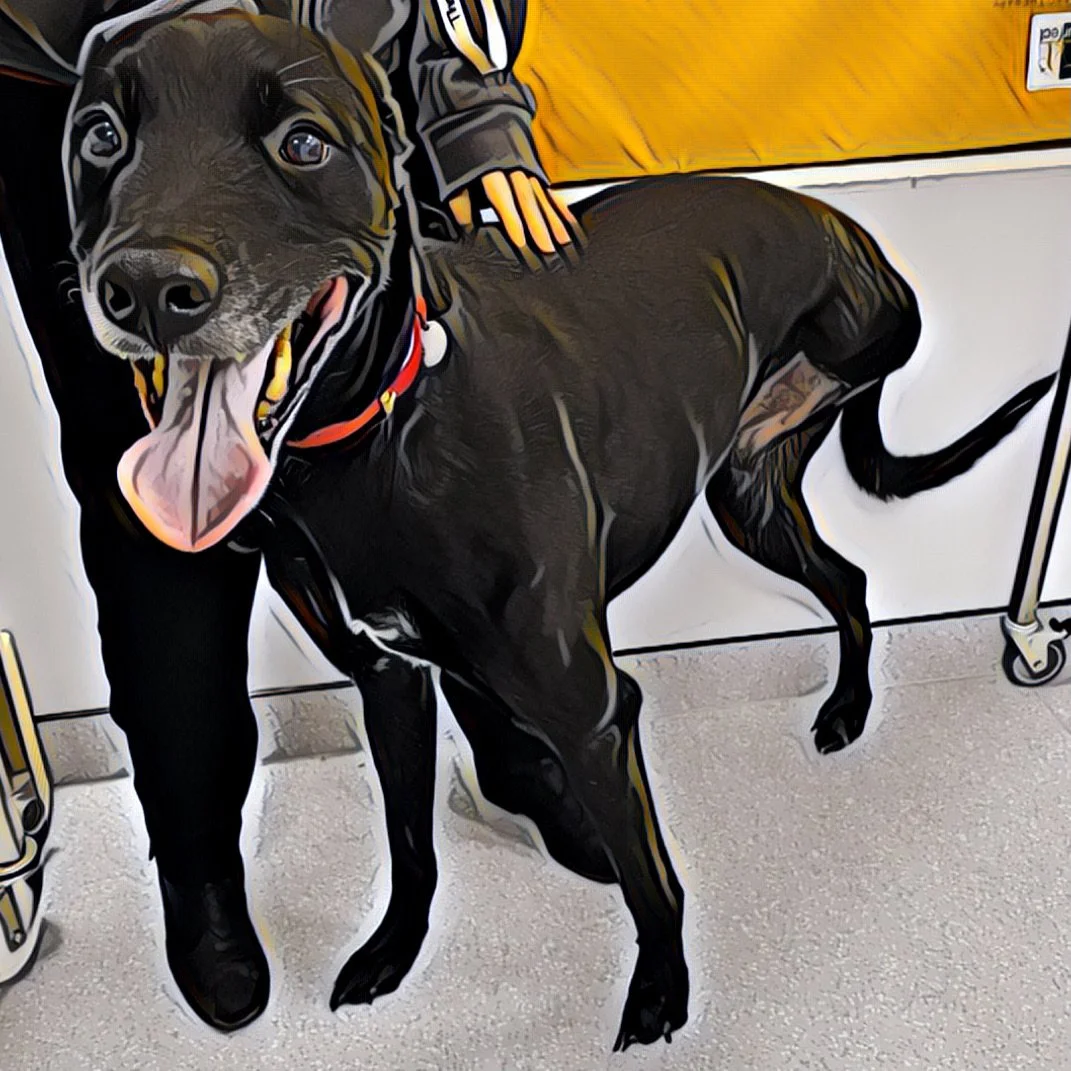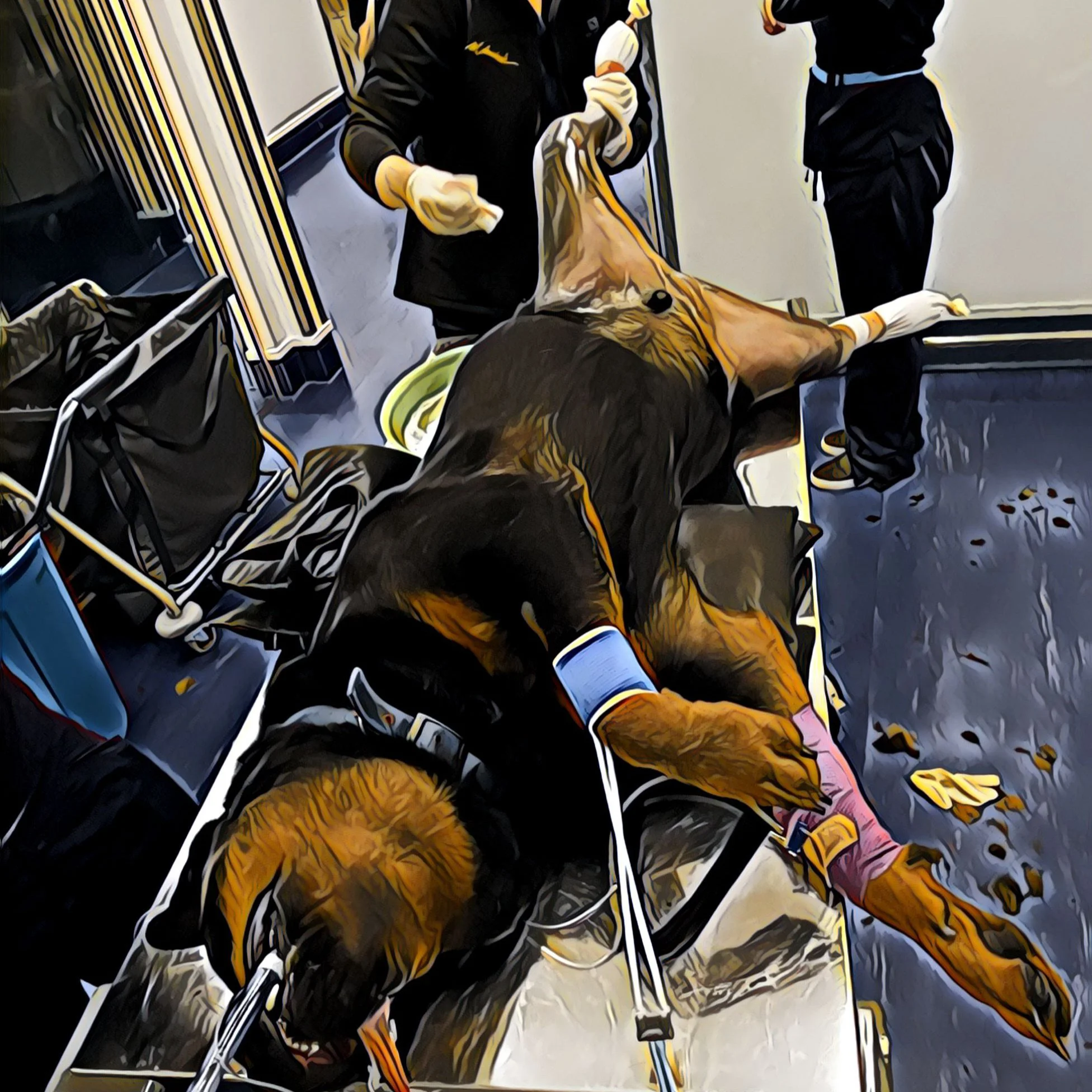HOW DO WE LIMIT RISK?
An animal lover’s biggest fears are pain and premature death. We can address these fears in the context of ACL injury by asking two questions.
1: Which treatment is least painful?
2: Which treatment is safest?
-

DO CARS CAUSE CRASHES?
An ACL injury involves a long journey. Our starting point is pain, and our destination is comfort. Safe arrival means navigating a potentially hazardous road. ‘Walking this road’ represents non-surgical management. It’s the best choice for someone who's terrified of driving or can't afford a car. The trade off for reduced risk is a long, uncomfortable journey. What's the best way to limit risk for a car journey? Should a passenger focus on the vehicle? If so, published data support a Tesla over a Ferrari or Aston Martin. The problem with this decision-making strategy is that cars don't crash themselves. The logical approach is to focus on the actual cause of accidents - the driver. Professional drivers are specialists in their discipline. They owe much of their success to expert training rather than driving experience. They’re supported by a team of highly-trained mechanics. If you focus on your driver, there's no need to worry about their car. Professionals already know which model offers you a safe and comfortable journey.
-

DO TECHNIQUES CAUSE COMPLICATIONS?
I performed my first TPLO in 2004. Since then, my ACL re-operation rate remained stable at 3-5%. In my case, the accumulated experience of >1000 ACL operations didn’t change my complication rate. Why is that? The answer lies in the methods employed to train specialists. Our training programmes ensure we don't operate alone. For the first 18 months of my residency, specialists watched my every move. As well as teaching, they were safeguarding my patients. Without them, my inexperience could have put their health at risk. Carers often use online risk data to help them decide which operation is safest. Overall, this data supports TPLO. Using these statistics to make an informed choice suffers an important limitation. It's like using accident statistics to choose a vehicle. Car accident and surgical risk statistics are both influenced by human factors. This is why there’s a wide range of complication rates for the same operation. Surgeons influence complication statistics in the same way drivers influence accident statistics.
-

HOW SAFE IS GENERAL ANAESTHESIA?
Risk of ACL surgery includes adverse events occurring during or after an operation. Immediate risk depends on patient factors and the surgical team. We classify pre-surgical patient health using an American Society of Anesthesiologists (ASA) rating. Healthy dogs get a score of 1/5. Older dogs with mild systemic illness get a score of 2/5. Almost all candidates for ACL surgery have a score of 1-2. The anaesthetic death rate for this group is ~1 in 2000. Avoiding surgery doesn't mean risk drops to zero. It means one risk is substituted for another. Daily painkillers are usually discontinued a few weeks after an operation. Without surgery, most dogs receive 1-2 painkillers for months or years. Medications produce a cumulative risk and have a gradually reducing impact on chronic pain. This explains why euthanasia because of knee pain is more likely in non-operated dogs.
-

DO NUMBERS CONVEY RISK?
Human perception and response to risk are shaped by many social and cultural factors. Powerful influences include uncertainty, familiarity, fear, and (mis)trust in experts. Data formatting makes a big difference. For instance, does a 1 in 32 risk seem more hazardous than a 3.1% risk? Even though the data is identical, most people find ratios more intimidating. Our reaction to flying and driving offers a vivid illustration of illogical risk perception. According to the National Safety Council, the lifetime risk of dying in a plane crash is 1 in 7,032. In contrast, the lifetime risk of dying in a car accident is a whopping 1 in 107. Even so, the average citizen is more afraid of flying than driving. Risk perception is heavily influenced by positive or negative framing. For instance, a 3/100 chance of re-operation is more intimidating than a 97/100 chance of a smooth recovery. We can avoid numeracy bias by analysing visual aids instead of numbers. For many carers, images mean the difference between informed consent and confusion. Tap here to learn more about medical risk visual aids.
-
A GREYHOUND LESSON
Could your choice trigger ACL degeneration in the opposite knee? The short answer is “no”. Risk of ACL degeneration is coded into the genes of many popular dog breeds. Altering gene expression in adults is either difficult or impossible. Even so, it’s human nature to seek control over a dog’s genetic destiny. This explains why many carers believe urgent ACL repair might spare the opposite knee. Although this concept seems plausible, it isn’t supported by science. Greyhounds offer a vivid illustration of the relationship between limb loading and ACL injury. They rank #6 for bone cancer, but they rarely suffer ACL injuries. Bone cancer is often treated with limb amputation. Amputees are guaranteed to expose their remaining hindlimb to increased load. Even so, published databases don’t include Greyhounds with degenerative ACL injuries.
-
A ROTTWEILER LESSON
Can ACL surgery cause cancer? The short answer is “probably not”. Bone cancer risk also varies with breed. Unfortunately, Rottweilers suffer a high risk for both conditions, ranking #5 for bone cancer and #8 for ACL injury. Fortunately, bone cancer is rare, even in high-risk breeds. In a lifetime, 1 in 555 Rottweilers will develop proximal tibial osteosarcoma. One study proposed a link between proximal tibial bone cancer and TPLO. In that study, 34 dogs developed cancer at the site of a previous TPLO. The authors compared these 34 dogs to 79 age- and breed-matched controls. There were no cases of bone cancer in the control group. This is unsurprising because the chance of finding 1 proximal tibial cancer in a group of 79 high-risk dogs is about 1 in 7 (i.e. 555/79). In this study, TPLO implants were innocent bystanders and chronic inflammation was the smoking gun. It goes without saying that the true culprit is present at the scene of every ACL injury. A valid study must compare thousands of dogs treated surgically with thousands of dogs managed non-surgically.



